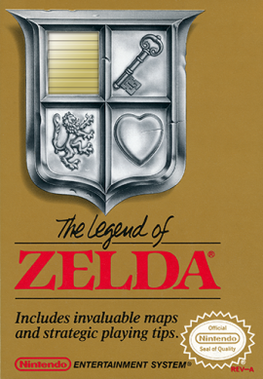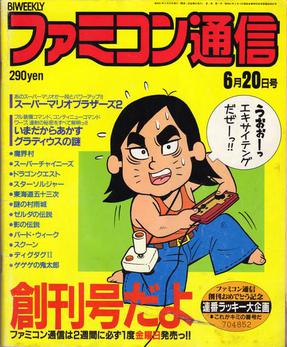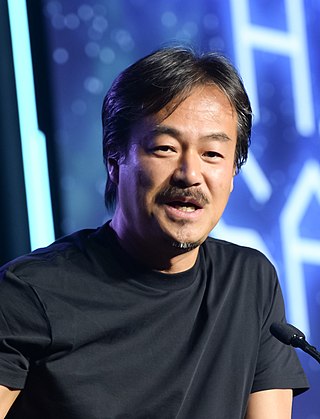Square Co., Ltd. was a Japanese video game development studio and publisher. It was founded in 1986 by Masafumi Miyamoto, who spun off part of his father's electronics company Den-Yu-Sha. Among its early employees were Hironobu Sakaguchi, Hiromichi Tanaka, Akitoshi Kawazu, Koichi Ishii, Kazuko Shibuya, Nasir Gebelli and Nobuo Uematsu. After several other projects, all of these employees would work on Final Fantasy, a 1987 game for the Nintendo Entertainment System which would bring commercial and critical success and launch a franchise of the same name. Later notable staff included Yoshinori Kitase, Takashi Tokita, Tetsuya Nomura, Yoko Shimomura and Yasumi Matsuno.

Final Fantasy III is a role-playing video game developed and published by Square for the Family Computer. The third installment in the Final Fantasy series, it is the first numbered Final Fantasy game to feature the job-change system. The story revolves around four orphaned youths drawn to a crystal of light. The crystal grants them some of its power, and instructs them to go forth and restore balance to the world. Not knowing what to make of the crystal's pronouncements, but nonetheless recognizing the importance of its words, the four inform their adoptive families of their mission and set out to explore and bring back balance to the world.

The Family Computer Disk System, commonly shortened to the Famicom Disk System or just Disk System, is a peripheral for Nintendo's Family Computer home video game console, released only in Japan on February 21, 1986. It uses proprietary floppy disks called "Disk Cards" for cheaper data storage and it adds a new high-fidelity sound channel for supporting Disk System games.

The Legend of Zelda, originally released in Japan as The Hyrule Fantasy: Zelda no Densetsu, is an action-adventure game developed and published by Nintendo. The first game of The Legend of Zelda series, it is set in the fantasy land of Hyrule and centers on an elf-like boy named Link, who aims to collect the eight fragments of the Triforce of Wisdom in order to rescue Princess Zelda from the antagonist Ganon. During the course of the game, the player controls Link from a top-down perspective and navigates throughout the overworld and dungeons, collecting weapons, defeating enemies and uncovering secrets along the way.

The 3-D Battles of WorldRunner, originally released in Japan as Tobidase Daisakusen, is a 1987 third-person rail shooter platform video game developed and published by Square for the Family Computer Disk System. It was later ported to cartridge format and published by Acclaim for the Nintendo Entertainment System.

Famitsu, formerly Famicom Tsūshin, is a line of Japanese video game magazines published by Kadokawa Game Linkage, a subsidiary of Kadokawa. Famitsu is published in both weekly and monthly formats as well as in the form of special topical issues devoted to only one console, video game company, or other theme. Shūkan Famitsū, the original Famitsu publication, is considered the most widely read and respected video game news magazine in Japan. From October 28, 2011, the company began releasing the digital version of the magazine exclusively on BookWalker weekly.
1991 saw many sequels and prequels in video games, such as Street Fighter II, Final Fantasy IV, Super Castlevania IV, Mega Man 4, Super Ghouls 'n Ghosts, and The Legend of Zelda: A Link to the Past, along with new titles such as Sonic the Hedgehog, Battletoads, Lemmings, Sunset Riders, Duke Nukem, Fatal Fury: King of Fighters, and Streets of Rage. The year's highest-grossing video game worldwide was Capcom's arcade fighting game Street Fighter II. The year's best-selling home system was the Game Boy for the second year in a row, while the year's best-selling home video game was Sega's Sonic the Hedgehog, which was also the year's top video game rental in the United States.
1988 saw many sequels and prequels in video games, such as Dragon Quest III, Super Contra, Super Mario Bros. 2, Mega Man 2, Double Dragon II: The Revenge, and Super Mario Bros. 3, along with new titles such as Assault, Altered Beast, Capcom Bowling, Ninja Gaiden, RoboCop, Winning Run and Chase H.Q.
1987 saw many sequels and prequels in video games, such as Castlevania II: Simon's Quest, Dragon Quest II, Final Lap, and Zelda 2, along with new titles such as After Burner, Contra, Double Dragon, Final Fantasy, Metal Gear, Operation Wolf, Phantasy Star, Shinobi, Street Fighter and The Last Ninja. The Legend of Zelda was also introduced outside of Japan.
1986 saw many sequels and prequels in video games, such as Super Mario Bros. 2, along with new titles such as Arkanoid, Bubble Bobble, Castlevania, Dragon Quest, Ikari Warriors, The Legend of Zelda, Metroid, Out Run and R.B.I. Baseball. The year's highest-grossing arcade video games were Hang-On in Japan, Hang-On and Gauntlet in the United States, and Nemesis (Gradius) in London. The year's best‑selling home system was the Nintendo Entertainment System (Famicom) for the third year in a row, while the year's best-selling home video games in Western markets were Super Mario Bros. in the United States and Yie Ar Kung-Fu in the United Kingdom.
Miho Nakayama is a Japanese singer and actress represented by Big Apple Co., Ltd. Nicknamed Miporin (ミポリン), Nakayama occasionally uses the pseudonyms Mizuho Kitayama or Issaque when she writes song lyrics.

Yoshio Sakamoto is a Japanese video game designer, director, and producer. He has worked at Nintendo since 1982. He has directed several games in the Metroid series. He is one of the most prominent members of Nintendo's former Research and Development 1 division, along with Gunpei Yokoi and Toru Osawa.
Nasir Gebelli is an Iranian-American programmer and video game designer usually credited in his games as simply Nasir. Gebelli wrote Apple II games for Sirius Software, created his own company Gebelli Software, and worked for Squaresoft. He became known in the early 1980s for producing fast action games for the Apple II, including 3D shooters.

Famicom Mukashibanashi: Shin Onigashima, often simply referred to as Shin Onigashima, is an adventure game developed by Nintendo R&D4 and Pax Softnica and published by Nintendo. It was first released on two disk cards for the Family Computer Disk System. The first disk was released on September 4, 1987, while the second disk was released September 30. The driving force behind the series, Tatsuya Hishida of Nintendo EAD, was responsible for directing the game, creating the characters, and crafting the storyline.

Metroid is an action-adventure game developed and published by Nintendo. The first installment in the Metroid series, it was originally released in Japan for the Family Computer Disk System in August 1986. North America received a release in August 1987 on the Nintendo Entertainment System in the Game Pak ROM cartridge format, with the European release following in January 1988. Set on the planet Zebes, the story follows Samus Aran as she attempts to retrieve the parasitic Metroid organisms that were stolen by Space Pirates, who plan to replicate the Metroids by exposing them to beta rays and then use them as biological weapons to destroy Samus and all who oppose them.

Final Fantasy is a fantasy role-playing video game developed and published by Square in 1987. It is the first game in Square's Final Fantasy series, created by Hironobu Sakaguchi. Originally released for the NES, Final Fantasy was remade for several video game consoles and is frequently packaged with Final Fantasy II in video game collections. The first Final Fantasy story follows four youths called the Warriors of Light, who each carry one of their world's four elemental crystals which have been darkened by the four Elemental Fiends. Together, they quest to defeat these evil forces, restore light to the crystals, and save their world.

Famicom Detective Club is an adventure game duology developed and published by Nintendo for the Family Computer Disk System. The first entry, The Missing Heir, was released in 1988, followed by a prequel released the next year titled The Girl Who Stands Behind. In both games, the player takes on the role of a young man solving murder mysteries in the Japanese countryside.

Hironobu Sakaguchi is a Japanese game designer, director, producer, and writer. Originally working for Square from 1983 to 2003, he departed the company and founded independent studio Mistwalker in 2004. He is known as the creator of the Final Fantasy franchise, in addition to other titles during his time at Square. At Mistwalker, he is known for creating the Blue Dragon and Terra Battle series among several standalone titles, moving away from home consoles and creating titles for mobile platforms.

Miho Nakayama Perfect Best 2 is the 16th compilation album by Japanese entertainer Miho Nakayama. Released through King Records on November 2, 2013, the album is a supplement to the 2010 compilation Miho Nakayama Perfect Best, covering the singles not featured in the previous release and including different versions of Nakayama's popular singles.













